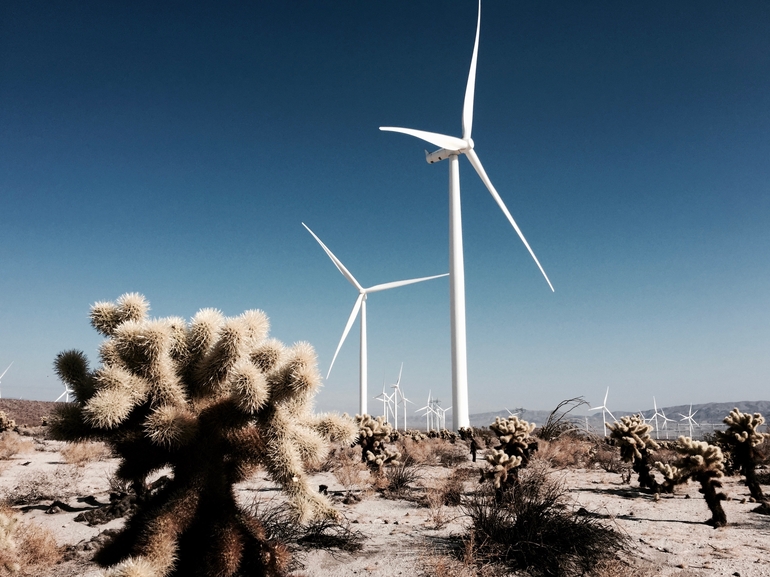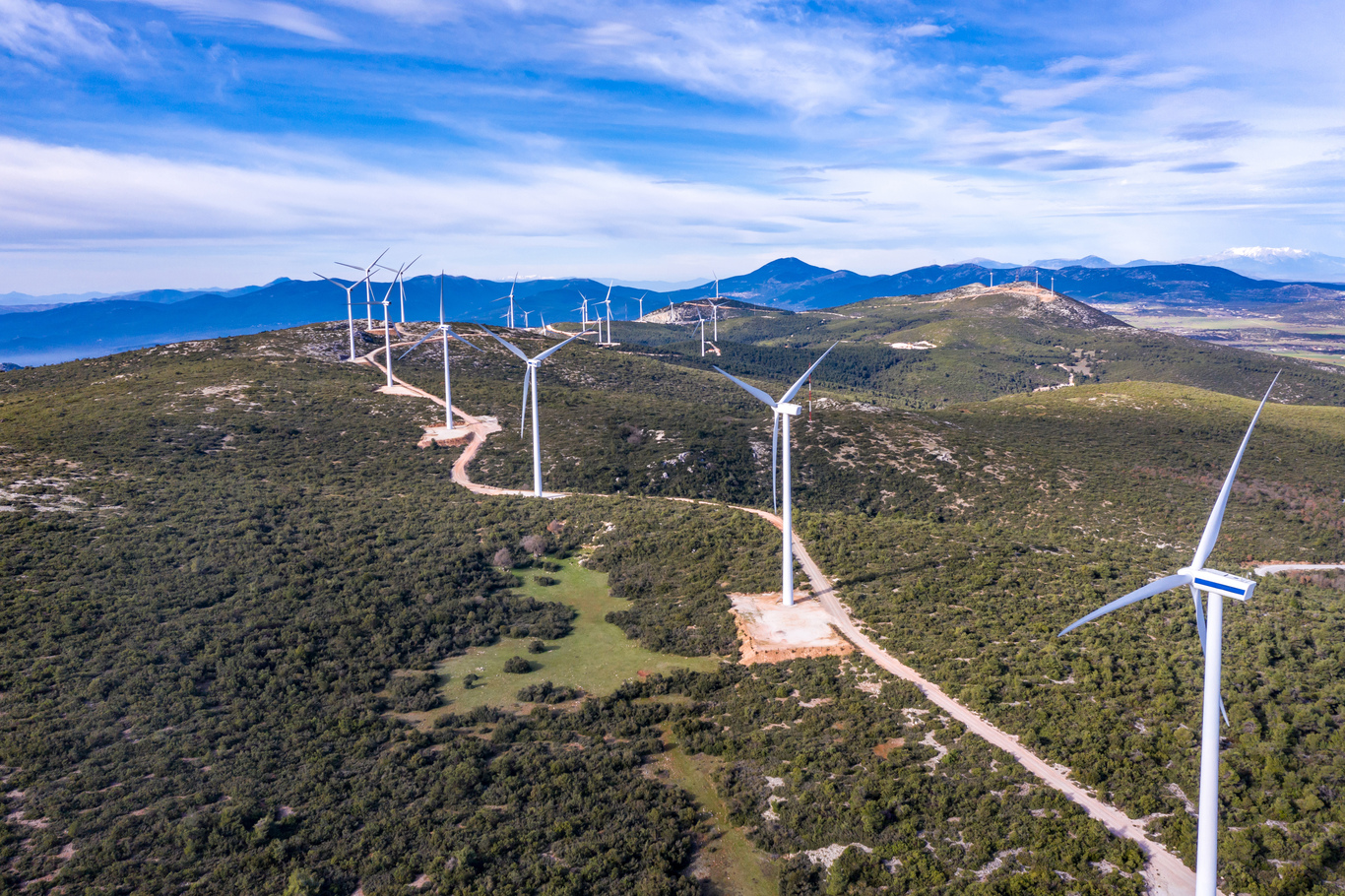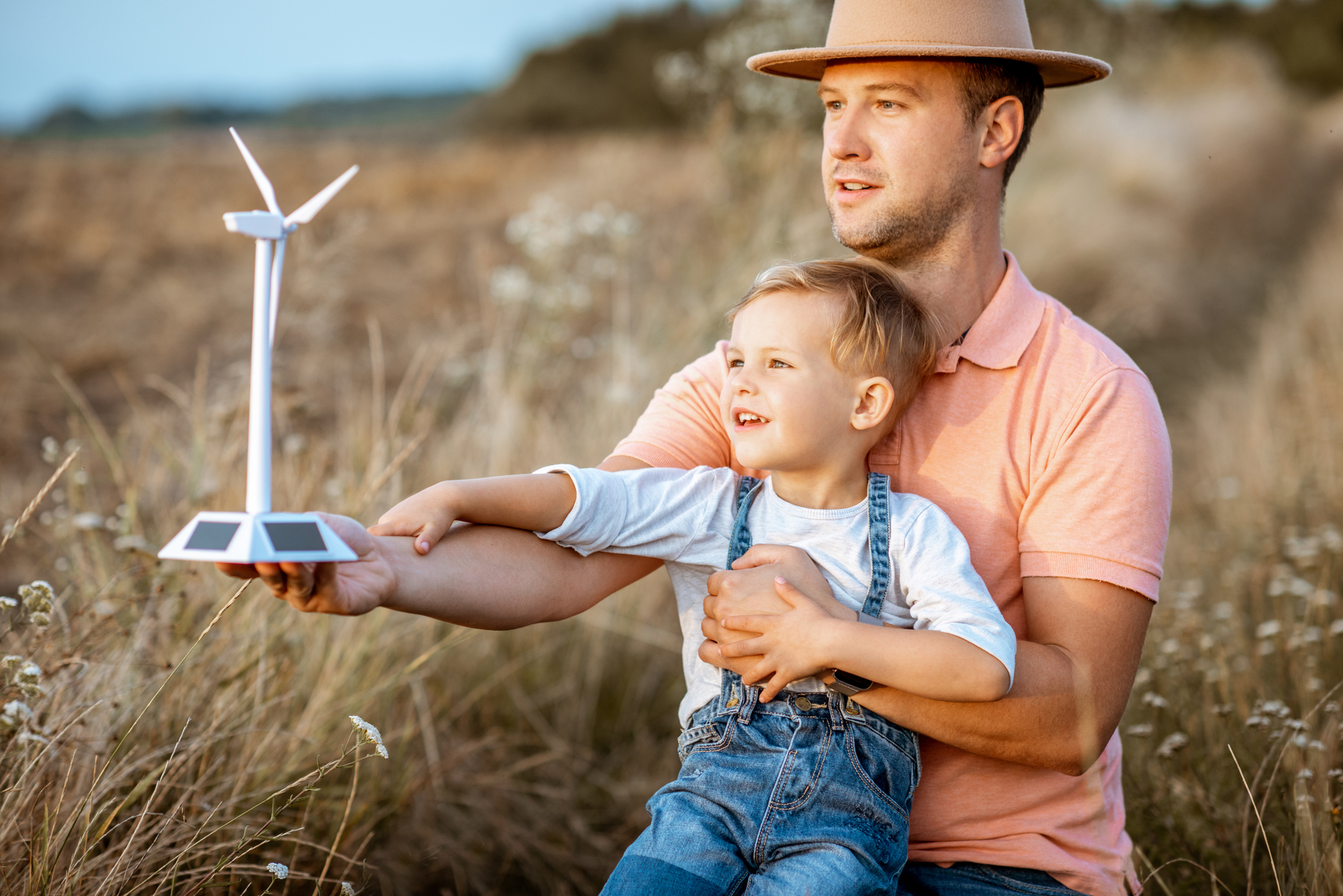In 2023, wind energy was already being widely used, and the most interesting question is will wind energy be used in the future? The answer is yes, wind energy is expected to continue playing a significant role in the future of renewable energy production. Wind power is considered a key component of efforts to transition to cleaner and more sustainable sources of energy to mitigate climate change and reduce dependence on fossil fuels. Here are the several factors that contribute to this expectation:
- Environmental Concerns
- Cost Competitiveness
- Reduce Poverty Rates
- Energy Transition
- Energy Storage Integration
Environmental Concerns

Environmental concerns are a significant driving force behind the continued use and expansion of wind energy in the future. Wind power is often seen as a more environmentally friendly and sustainable alternative to traditional fossil fuels, and it addresses several critical environmental issues:
Reduced Greenhouse Gas Emissions
One of the most pressing environmental concerns is climate change, driven by the release of greenhouse gases (GHGs) such as carbon dioxide (CO2) from burning fossil fuels. Wind energy generation produces virtually no direct GHG emissions, making it a crucial tool in mitigating climate change. By transitioning to wind power, countries can reduce their carbon footprint and work towards their emissions reduction targets as outlined in international agreements like the Paris Agreement.
Air Quality Improvement
The burning of fossil fuels for electricity generation and transportation releases various pollutants into the air, leading to poor air quality and adverse health effects for humans and ecosystems. Wind energy does not produce air pollutants, so it helps improve local air quality, reducing respiratory illnesses and other health problems associated with air pollution.
Water Conservation
One of the primary environmental benefits of wind energy in terms of water conservation is its minimal water consumption throughout its lifecycle. Traditional power plants, particularly those relying on thermoelectric processes, consume vast amounts of water for cooling. This water is often withdrawn from rivers, lakes, or underground aquifers and is subsequently discharged at elevated temperatures back into these water bodies, potentially harming aquatic ecosystems and altering the water’s thermal balance. In contrast, wind turbines do not require water for cooling, which helps to protect and conserve freshwater resources.
Wind energy also helps mitigate water pollution. Traditional power plants, especially those burning fossil fuels, release pollutants into the air, which can eventually find their way into water bodies through atmospheric deposition or runoff. This pollution can negatively impact water quality, aquatic life, and human health. Wind energy’s absence of direct emissions contributes to cleaner air, reducing the potential for pollutants to enter water bodies and harm ecosystems.
Habitat Preservation
Wind farms can be designed and sited to minimize their impact on wildlife and ecosystems. However, there are still concerns about potential impacts on local wildlife, particularly birds and bats. Research and careful planning are essential to mitigate these concerns and minimize harm to wildlife habitats.
Reduced Land Use
Wind turbines are typically installed on existing agricultural land or in areas with minimal land use, such as deserts or offshore locations. This reduces the need for large-scale land clearing or habitat destruction that can occur with some other forms of energy production, such as coal mining.
Resource Renewability
Wind is a naturally occurring and virtually limitless resource, making it a sustainable and renewable energy source. Unlike fossil fuels, which are finite and have environmental consequences associated with extraction and combustion, wind energy harnesses the Earth’s natural wind patterns without depleting a finite resource.
Energy Independence
By investing in wind energy and reducing reliance on fossil fuels, countries can increase their energy independence and reduce vulnerability to energy supply disruptions caused by geopolitical conflicts or resource depletion.
It’s important to acknowledge that while wind energy has many environmental benefits, it is not entirely without environmental impacts. As mentioned earlier, careful planning, environmental impact assessments, and ongoing research are necessary to minimize any negative effects and continually improve the sustainability of wind energy projects.
Cost Competitiveness

Cost competitiveness is a compelling factor driving the continued and future use of wind energy as a prominent source of electricity generation. Over the past few decades, significant advancements in technology, coupled with economies of scale, have led to substantial cost reductions in wind energy production. This trend positions wind power as a financially attractive option for both governments and businesses, bolstering its potential to play a pivotal role in the energy landscape of the future.
One of the primary drivers of cost competitiveness in wind energy is the declining cost of wind turbines and their associated components. Technological innovations have led to more efficient and reliable turbine designs, resulting in increased energy output and lower maintenance costs. Additionally, increased manufacturing capacity and competition in the wind turbine industry have driven down the prices of these critical components. This combination of improved technology and a competitive market has significantly decreased the capital costs associated with setting up wind farms.
The operational and maintenance costs of wind energy facilities are relatively low compared to many other forms of electricity generation. Wind turbines have fewer moving parts than conventional power plants, reducing the need for frequent and expensive maintenance. The remote monitoring and diagnostics capabilities of modern wind turbines further contribute to cost-effectiveness by enabling timely identification and resolution of potential issues.
Another cost-related advantage of wind energy lies in its minimal fuel costs. Unlike fossil fuel-based power generation, wind energy relies on the natural resource of wind, which is free and inexhaustible. This translates to stable and predictable energy costs over the lifespan of a wind farm, shielding consumers from the price volatility associated with fossil fuel markets.
Furthermore, wind energy benefits from its ability to harness a distributed and abundant resource. Wind is available in various regions across the globe, and wind farms can be strategically located to take advantage of strong and consistent wind patterns. This geographical diversity reduces the risk of supply disruptions and transmission losses, contributing to cost stability and grid reliability.
The declining levelized cost of electricity (LCOE) for wind energy has made it increasingly competitive with fossil fuels. LCOE accounts for the total cost of building and operating a generating plant over its lifetime, including financing, construction, fuel, maintenance, and other factors. As wind energy costs continue to decrease, it often becomes the more economical choice for new electricity generation projects.
Government policies and incentives have also played a significant role in enhancing the cost competitiveness of wind energy. Many countries offer subsidies, tax credits, or feed-in tariffs to promote the development of wind power projects. These incentives not only make wind energy more financially attractive but also stimulate investment and job creation in the renewable energy sector.
Energy Transition

The global energy transition is a pivotal factor driving the increasing use of wind energy in the future. This transition represents a fundamental shift from reliance on fossil fuels, which are finite and environmentally damaging, to cleaner, more sustainable, and renewable sources of energy. One of the primary goals of the energy transition is to combat climate change by reducing greenhouse gas emissions. Wind energy is a carbon-neutral source of electricity generation, as it produces virtually no direct greenhouse gas emissions during its operation. By integrating wind power into the energy mix, countries can make substantial progress toward meeting their emission reduction targets as outlined in international agreements like the Paris Agreement.
The transition to wind energy helps diversify the energy mix, reducing dependence on fossil fuels. Overreliance on a single energy source, especially fossil fuels, can leave economies vulnerable to supply disruptions and price fluctuations. Wind power, as a domestically available and renewable resource, contributes to energy security and independence.
Wind energy is inherently sustainable and renewable, as it harnesses the kinetic energy of the wind, a naturally occurring and virtually limitless resource. This contrasts sharply with fossil fuels, which are finite and come with environmental and geopolitical risks associated with extraction and supply. So, this transition is motivated by environmental concerns and the imperative to reduce greenhouse gas emissions. Wind power’s role in this transition is expected to continue growing as technology advances, costs decrease, and governments implement policies supportive of renewable energy development.
Reduce Poverty Rates

Reducing poverty rates is a multifaceted social and economic goal, and wind energy can contribute to this objective in several ways, making it an essential factor in the future of energy production. Here’s a more detailed explanation of how wind energy can help alleviate poverty:
Job Creation
The wind energy sector offers a substantial source of employment opportunities, ranging from manufacturing and construction to operations and maintenance. As wind farms are developed and expanded, they require a diverse workforce, including engineers, technicians, project managers, and construction workers. In regions with significant wind energy investments, this job creation can have a transformative impact on local economies, leading to increased income and reduced unemployment rates. Job opportunities in the wind energy industry often provide stable employment with competitive wages and benefits, making it an attractive option for individuals and communities seeking economic advancement.
Rural Economic Development
Wind farms are often situated in rural areas with abundant wind resources. These areas may have struggled with economic challenges, including limited job opportunities and declining populations. Wind energy projects inject capital into these regions through land lease payments, tax revenues, and the purchase of goods and services from local businesses. This economic stimulus can revitalize rural communities, support small businesses, and enhance the quality of life for residents, ultimately reducing poverty rates in these areas.
Income Diversification
Many landowners in wind-rich regions lease their land for wind turbines, providing an additional source of income. This diversification of income streams can help stabilize household finances and reduce vulnerability to economic fluctuations. Land lease payments can make a meaningful difference for landowners, especially in agricultural communities where income can be variable due to factors like weather and crop yields.
Investment in Education and Skills Development
The growth of the wind energy industry often leads to investments in education and skills development programs. Local educational institutions may offer training programs and courses related to wind energy technology, providing residents with valuable skills and qualifications for employment in the industry. This educational investment can empower individuals with the tools they need to access higher-paying jobs, thus lifting them out of poverty.
Community Investment Funds
In some cases, wind energy projects establish community investment funds as part of their development agreements. These funds are dedicated to supporting local initiatives, such as education, healthcare, infrastructure, and community development projects. By contributing to these funds, wind energy projects directly benefit the communities where they operate, further improving the well-being of residents and reducing poverty.
Energy Access
Access to affordable and reliable electricity is a fundamental driver of economic development. Wind energy projects, particularly those in off-grid or underserved regions, can provide access to electricity for communities that previously lacked this essential resource. Reliable electricity can enable small businesses, improve healthcare services, support education, and enhance overall quality of life, all of which contribute to poverty reduction.
By promoting the growth of the wind energy industry and ensuring equitable access to its benefits, societies can harness this renewable energy source to create economic opportunities, alleviate poverty, and improve the well-being of communities and individuals, thereby contributing to a more inclusive and sustainable future.
Energy Storage Integration

Energy storage integration is a pivotal factor driving the growing use of wind energy in the future. While wind power offers numerous environmental and economic advantages, it also presents challenges due to its intermittent nature—winds do not blow consistently at all times. Energy storage solutions address this challenge by capturing excess energy generated during windy periods and making it available for use when the wind is not blowing. Here’s a more detailed exploration of the role of energy storage integration in the future of wind energy.
Energy storage systems, such as batteries and pumped hydro storage, serve as a crucial bridge between wind power generation and grid reliability. They allow wind energy to be stored when production exceeds demand and released when it is needed most, helping to balance the grid and meet electricity demand consistently. This means that wind energy can be dispatched as needed, providing a stable and predictable power supply that aligns with the varying demand patterns throughout the day.
Energy storage integration enhances the overall efficiency and economic viability of wind energy systems. It enables wind farms to capture more of the energy they generate, reducing wastage during periods of low demand. This optimization of energy utilization increases the return on investment for wind power projects and makes them more financially attractive to investors and utilities.
Furthermore, energy storage mitigates the issue of grid congestion. In some regions, an abundance of wind energy can overwhelm the grid during periods of high wind, leading to curtailment, where excess energy goes unused. Energy storage systems absorb this surplus energy, preventing curtailment and making the most of wind resources. This not only maximizes the use of renewable energy but also minimizes the need for costly grid upgrades and infrastructure improvements.
Energy storage integration also contributes to grid stability and resilience. Wind energy can experience rapid fluctuations due to changes in wind speed, which can affect the grid’s stability. Energy storage systems provide rapid response capabilities, injecting or absorbing power as needed to stabilize the grid. This grid support function enhances the reliability and resilience of the electricity system, which is crucial as more renewable energy sources are integrated into the grid.
Additionally, the combination of wind energy and energy storage supports grid flexibility and the integration of other renewable energy sources like solar power. As solar and wind power often complement each other seasonally, energy storage systems can balance the intermittency of both sources, ensuring a more consistent and reliable energy supply. This synergy between different renewable energy technologies strengthens the overall resilience of the energy system.
The development of advanced energy storage technologies is ongoing, with research focused on improving energy density, efficiency, and cost-effectiveness. As these technologies evolve and become more affordable, energy storage integration will play an increasingly vital role in the future of wind energy. It will enable wind power to provide a stable and dispatchable source of clean electricity, making it a central component of a sustainable and reliable energy system, capable of meeting the world’s growing energy needs while reducing greenhouse gas emissions. In essence, energy storage integration is a critical enabler for the continued growth and utilization of wind energy in the future.

In envisioning the future of wind energy, it’s evident that its role in shaping a sustainable and clean energy landscape is pivotal. As individuals, communities, and nations, we have a collective responsibility to accelerate the adoption of wind power. We can take action by supporting renewable energy policies, advocating for investments in wind infrastructure, and fostering innovation in energy storage technologies. Whether through individual choices or collaborative efforts, each step taken today can make a profound impact on the future we leave for generations to come. Together, let’s harness the boundless potential of the wind and steer the course toward a cleaner, brighter, and more sustainable energy future for all.
